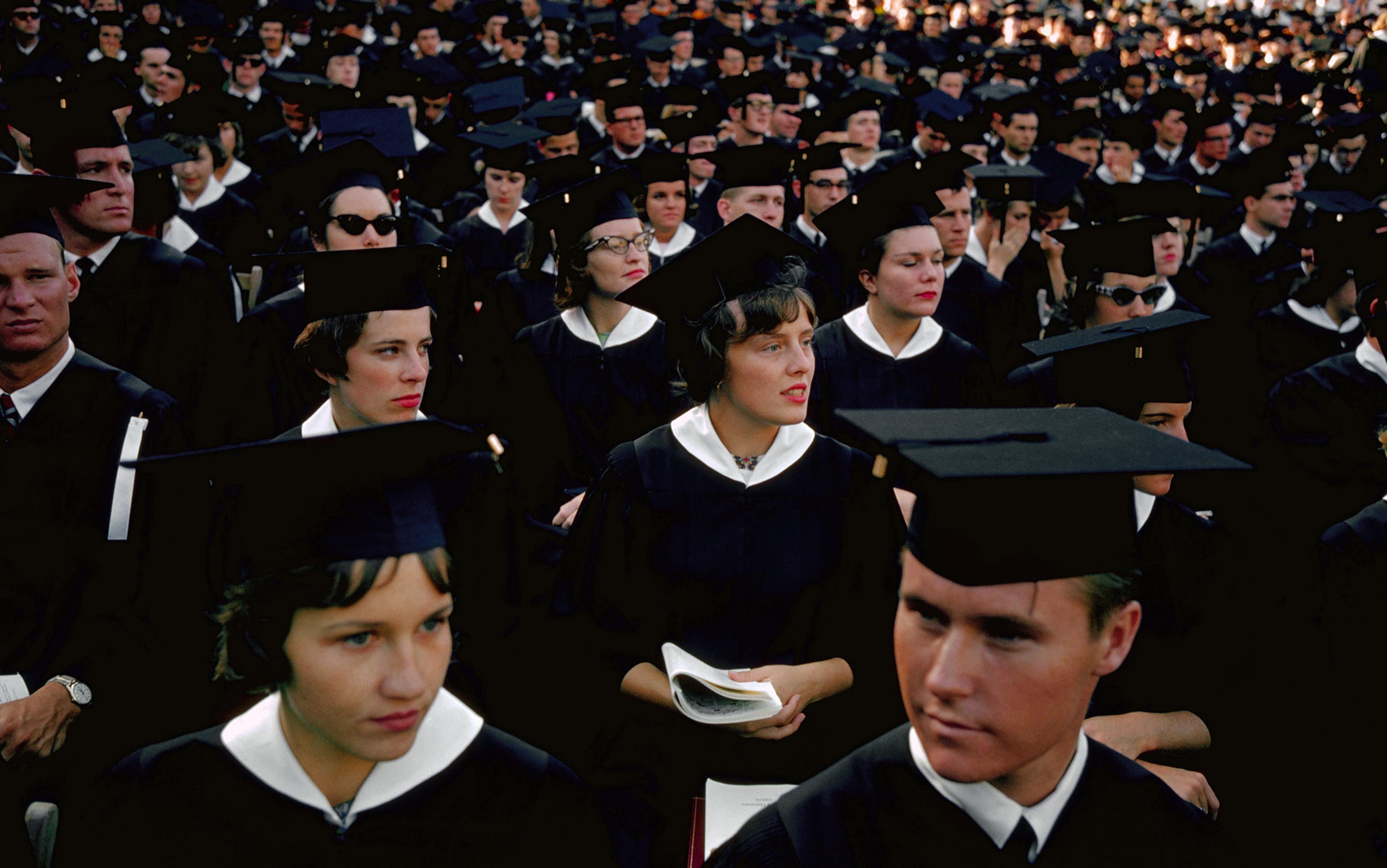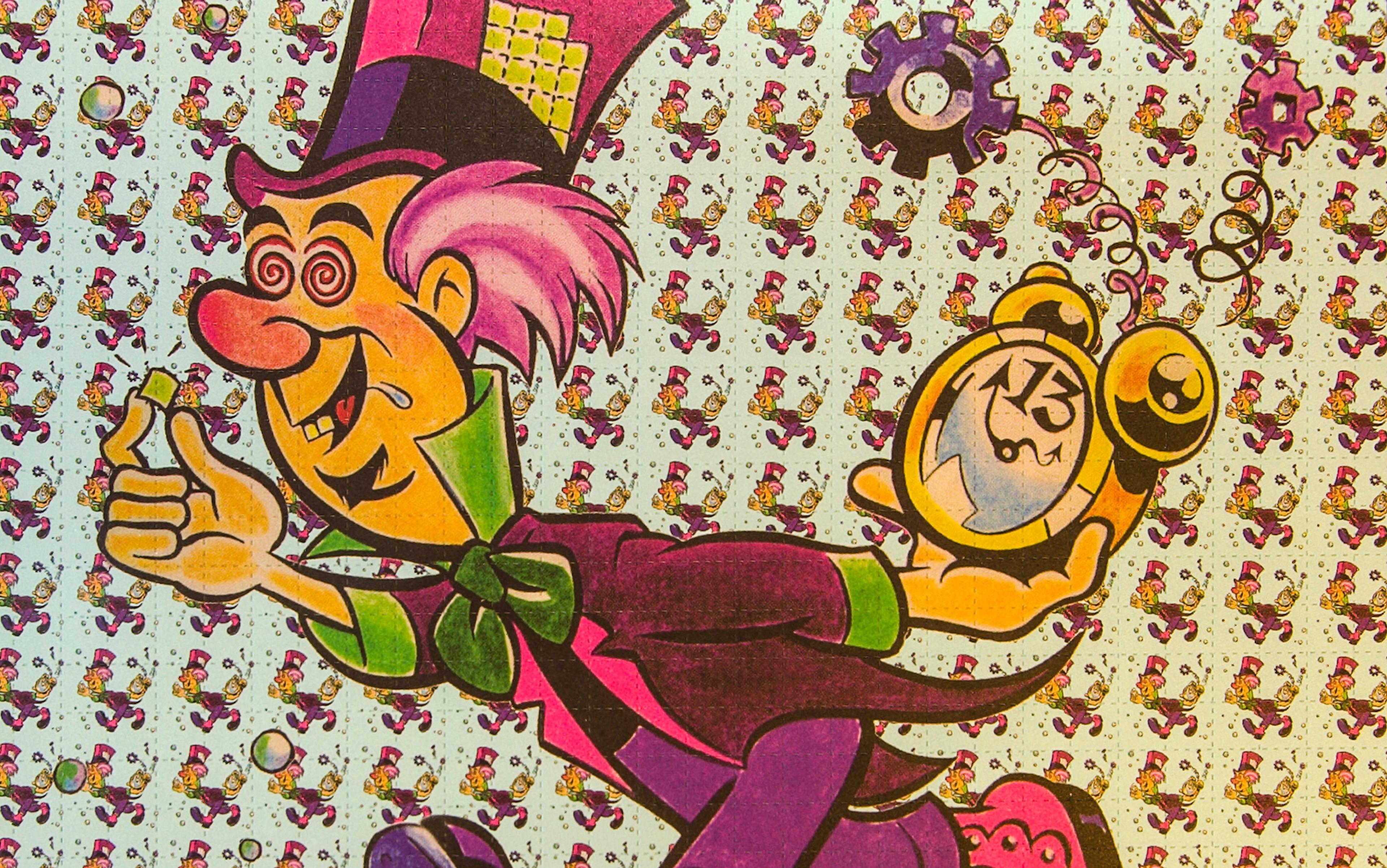In 1904, while touring the eastern half of the United States, the German sociologist Max Weber encountered an institution that would intrigue him for decades, the American college. Between delivering lectures and finishing the final drafts of what would become The Protestant Ethic and the Spirit of Capitalism (1905), Weber visited Columbia University, Harvard University, Haverford College, Northwestern Univeristy, and others. On their pretty, well-kept campuses, he found, as he wrote to his wife Marianne, a fascinating ‘wild muddle’ [ein wildes Durcheinander] of education, religion and socialisation. The American college was neither a finishing school for the wealthy nor a training academy for professionals; it was a social institution that performed liturgies, cultivated character, and helped to sustain the culture of a uniquely American capitalism.
More than a century after Weber’s US tour, the character of American colleges, and their faculty and students, receives national and international media attention, and prompts polemical debate. In the fall of 2015, student groups from 80 universities across the US demanded that their universities take action, as one statement put it, to ‘end systemic and structural racism on campus’. Within a few months, students from universities from Alabama to Yale had called on their presidents, trustees and faculty to create mandatory courses on racial awareness and bias, increase faculty diversity, implement policies to curb hate speech, or remove contested plaques or statues. That same fall, a group of students demanded the resignation of two faculty members from their administrative roles within Yale’s Silliman College over a public and acrimonious controversy surrounding offensive Halloween costumes and the notion of college as ‘home’. The following winter, hundreds of students interrupted a guest lecture at Middlebury College by Charles Murray, a member of the American Enterprise Institute, and later physically confronted and assaulted a political science professor who had interviewed Murray at another campus venue. Last fall, a group of students at the University of Virginia, where I teach, unfurled a banner that read ‘200 years of white supremacy’ in the middle of the university’s bicentennial celebration. They were promptly arrested by university police.
Across the Atlantic, the cascade of controversies on US campuses left a commentator in the German weekly Die Zeit dumbfounded. The language of students protesting privilege at places such as Middlebury and Yale – ‘trigger warnings’, ‘microaggressions’, ‘the privilege of the white-male-European’ – were ‘Unwörter’, or nonsense. The commentator, who claimed to teach at a US university and remained anonymous, warned that, however ‘exotic’ such language might ‘ring in [German] ears’, these developments would find their way across the Atlantic and into German universities. That, they wrote, would be ‘tragic’.
Scrutinising the political activism and moral lives of US undergraduates and faculty members is an established genre of cultural criticism. From campus novels such as F Scott Fitzgerald’s This Side of Paradise (1920) or John Williams’s Stoner (1965), which lampoon the pretensions of English professors and the high-minded lasciviousness of fraternity brothers, to the periodic reports in The New York Times on the latest campus crazy, America’s cultural elite keeps up with its alma mater. The four years spent at Middlebury, Yale or the University of Virginia are, as Weber observed, the most ‘magical memories of youth’ – it is what compels 40-year-olds to return for class reunions and give money. It’s also what sustains the scrutiny of campus life. Reading about the latest outrage is like catching up on the family drama at Thanksgiving dinner – an act of sometimes proud, sometimes repulsed, recognition.
More recently, some scholars have trained their expertise towards other domains of American campus life. One of the most prominent, Jonathan Haidt, a social psychologist at New York University and an advocate of what he calls ‘campus viewpoint diversity’, recently warned that the events of 2015 marked a turning point for American higher education. Where previously they had pursued truth as their singular purpose, the elite universities of the US now embraced ‘social justice’. But universities, like anything else, asserts Haidt with a vague appeal to Aristotle, can’t have two purposes, much less conflicting ones. They have to choose: truth or justice.
In fact, universities have never had just one purpose. They have always pursued multiple, often competing ends. For centuries, universities in the US and around the world have organised themselves around the maintenance of church doctrine and the education of the clergy and a confessing citizenry, the production of economic value, the formation of citizens (democratic and otherwise), the creation and transmission of knowledge, the maintenance of culture and class. In the 13th century, the University of Paris educated the clergy and sustained a scholarly community; in the 18th century, the University of Göttingen in Germany raised funds for the state Kammer and created the first scholarly research library; and in the late 19th century, the University of Chicago formed democratic citizens and produced scientific research for industry.
By legislative decree and financial incentive, it tethered the pursuit of truth to the pursuit of social goods
Between 1860 and 1900, during a time of growing state power, continental expansion and industrialisation, universities in the US reinvented themselves. Research universities such as Cornell and Stanford were founded; state universities increased enrolments and expanded faculty; specialised and professionalised scholarship grew in quantity and quality; private benefactors gave massive sums of money; and the sciences, bolstered by big investments from private industry and the state, overtook the classics, philosophy and theology as the dominant university disciplines.
In 1862, the US Congress passed the Morrill Act, which generated significant funds for colleges and universities. It led directly to the founding of new universities, such as the University of California, and to scientific schools at existing institutions, such as Princeton and Columbia. Although the Act is most often remembered for its support of ‘agriculture and the mechanic arts’, it also singled out ‘liberal’ education as a public good and mandated its support. The Act declared the creation and transmission of knowledge a democratic and social project. By legislative decree and financial incentive, it tethered one of the university’s historical purposes, the pursuit of truth, to another, the pursuit of social goods.
In the following decades, higher education leaders across the country embraced this dual mission of truth and public good as the defining purpose of a distinctly American university. In 1874, Andrew D White, a historian and the founding president of Cornell, told a national gathering of educators in Detroit that, while individual states had assumed responsibility for primary and secondary education, they had left higher education to ‘various religious sects’ that had done ‘lasting injury’ to the wellbeing of the nation. The American public, White implored his audience, needed universities that were ‘supported by the whole people and for the whole people’ and dedicated to ‘public civic action’.
During 1904, Weber saw institutions serving the public by forming young, elite and generally white Protestant men into civically minded leaders through a four-year liberal education. These students understood that their interests largely overlapped with the wellbeing of the broader public and the stability of the system that sustained them both. Later, Weber refined his account of the American college as a unique social institution, repeatedly contrasting it to German institutions of higher education. In 1911, Weber told an assembly of German professors in Dresden that the new US institutions had adopted a German university model but adapted it to a different culture and to different ends, and their scope now rivalled even the grandest of German universities.
They had developed out of an older American institution – the college. Originally established by religious sects to train ministers, American colleges had organised themselves around the strict discipline of student life. They required students to attend chapel services (often multiple times per day), maintained a fixed curriculum, and sought to form good Christian gentlemen. This cultivation project culminated in a fourth-year moral philosophy course, typically taught by the college president, usually an ordained minister, and designed to ground Protestant morality, character and dogma in common reason and shared social commitment. These capstone courses showed students how religious doctrine fit with modern knowledge, and how both related to life. Truth – in its scientific, moral and religious dimensions – was one.
As American colleges and universities transformed into research universities and, as Weber put it, became more ‘metropolitan’ – loosening or even severing their denominational affiliations, replacing the classical curriculum with an elective one, relaxing compulsory chapel attendance – they maintained their commitment to the ethical formation of their students.
In college, one learned not just to reflect upon the world but also to act in it and for it
At Northwestern University, Weber was dismayed that students had to account for their attendance in a ‘chapel record’, listened not only to sermons and scripture readings but also to the most recent theological scholarships, and were dismissed only after the day’s football and baseball schedules had been announced. Weber left Evanston impressed by the social life and ethos of undergraduate education, whose ‘output’, he wrote, was immediately obvious: ‘endless intellectual stimulation’, habituation to hard and serious work, lasting friendships, and endearing forms of sociability. The ‘college-bred man’, one American businessman assured Weber in Chicago, learned not just to reflect upon the world but also to act in it and for it.
German and American institutions of higher education formed two distinct types of people. German universities trained specialists according to the ideals of Wissenschaft, or scholarship, while American universities formed young men of ‘character’ according to the ideals of an emerging culture of industrial capitalism. Whether public or private, university or college, American institutions of higher education socialised students. They taught, Weber said in Dresden, young men how to hold their own among ‘social equals’ and also formed a social disposition that was the ‘foundation’ of American society. Whereas 18th- and early 19th-century Harvard, Princeton and Yale had formed clergy, by the turn of the 20th century they cultivated capitalists of character – cool and efficient managers as well as captains of industry brimming with confidence that they could change the world.
By the mid-20th century, the dominance of the Anglo-Protestant monopoly had largely eroded, and with it the ability of elite colleges to form character and robust social bonds on the basis of a homogenous culture. American colleges and universities grew again, increasing their enrolments. They slowly admitted women, Jews, Catholics and students from outside the elite. To replace the 19th-century moral theology courses, and the character they aimed to instil, these institutions turned to a curriculum aspiring to a unified account of knowledge and morality.
Scientists proved reluctant to offer their research as resources for moral instruction. Faculty members in literature, art, philosophy and history were less so. Beginning with the introduction of Columbia’s contemporary civilisation course in 1919, institutions introduced general education programmes in an effort, it seemed to many, to recover the fragmentation of the university’s pursuit of truth as both a matter of knowledge and morality. Between the 1930s and ’50s, literary scholars, philosophers and historians banded together to form a new institutional structure that claimed a monopoly over questions of morals and values. They called it ‘the humanities’.
In the 1960s, students demanded more engagement with social concerns, and universities responded by gradually introducing new humanities courses and programmes: in black studies, women’s studies and ethnic studies. Many conservative commentators, such as Allan Bloom, condemned such movements for supplanting the pursuit of truth with the performance of politics.
These curricular reforms, and the moral mission and democratic purpose that – to their proponents – they represent, have never fully been accepted. This contest underlay the canon wars of the 1980s and ’90s and, in the past few decades, led to protracted debates about (post)modern theory in literary studies, and the monitoring of ‘politicised’ courses and political indoctrination by activist groups. Most recently, there have been worries that conservative donors bought influence by financing university-based institutes and faculty positions. None of these efforts were, or will be, able to reproduce the social homogeneity and exclusion upon which the moral culture of the 19th-century college depended.
Amid these feuds, another, in some ways bigger, change has escaped due attention: college curricula have become largely peripheral to moral education. Within almost all colleges and universities, with the exception of some religiously affiliated institutions, moral education has shifted from the curriculum – from classrooms and labs – to extracurricular student life.
What happened in the classroom was about knowledge. What happened outside was about life and morality
Stories about colleges coddling students with lazy rivers, climbing walls and buffets provoke ire but fail to convey the richness and scale of extracurricular life. Students at places such as Middlebury, Yale and the University of Virginia spend more time participating in clubs, fraternities or sororities and athletics than they do in class or studying. At Virginia, students lead more than 800 clubs and groups, most with weekly meetings and events, from the Jefferson Literary and Debating Society to the Quidditch team; they volunteer hundreds of thousands of hours every year for local, national and international groups; they participate in collegiate sports, practising and training often 20 hours per week; and they participate in arts programmes, from small writing groups to internationally recognised orchestras.
Students are primarily formed outside of classrooms and apart from their professors. And it’s this institutional separation that is central to understanding contemporary American college campuses.
As universities experimented with various curriculum reform efforts in the first half of the 20th century, they simultaneously reasserted their control over student life by introducing new institutional programmes and structures almost entirely independent of the curriculum. Most of these extracurricular initiatives sought to instil moral character and a sense of common purpose. What happened in the classroom was about knowledge. What happened outside was about life and, however fragmented, morality.
Universities built dormitories, student unions, undergraduate libraries and residential colleges. The famed residential college systems at Harvard and Yale were not established until the late 1920s, with the first seven Yale colleges opening in 1933. Universities also established offices of student life and advice, offered counselling, and invested heavily in well-organised college sports.
Although American college students had been playing football for decades, it wasn’t until the second decade of the 20th century that universities constructed big stadiums and hired professional coaching staffs and athletic directors. They transformed collegiate athletics into ritual. Loyalty and love for one’s alma mater could be cultivated through the traditions of football games. The liturgical habits of the Protestant college were reinvented. The cadences of compulsory chapel gave way to stadium chants; the college professor ceded his moral standing to the football coach.
When universities shifted moral education out of their curricula and into to the realm of extracurriculars, they relieved faculty members of responsibility for the ethical formation of their students. And they generally did so with the consent of faculty members, grateful for the time to focus on other administrative obligations or their research. Professional administrative staff gradually took on the responsibility of character and moral education.
Many of my students at Virginia, along with some of their peers at Yale, Middlebury and elsewhere, are acting out of the complex tradition of American higher education. They are heeding and reinterpreting the dual purpose of the American college and university as Weber observed it, and as generations of university leaders have extolled it: to serve the public by forming citizens committed to civic action, to change the world. In its own way, the recent increase in student-led campus activism represents something of a return to these earlier ideals, an attempt to align knowledge and moral vision in a common institutional project. In a sense, it is the student activists, not the ‘viewpoint diversity’ advocates, who are the conservatives, the ones making moral judgments and defending ideals.
All of this is taking place against a backdrop of bigger change: education has become an almost incidental endeavour. The University of Virginia, for example, is an entertainment and production company (UVA’s concerts and events), a healthcare provider, a start-up incubator, a federally financed research unit, a philanthropic behemoth, a sports franchise, a police force – as well as a community devoted to education and the creation and transmission of knowledge. And these multifarious activities correspond to a range of distinct purposes. Contemporary universities are expected to educate, democratise, credentialise, socialise and produce economic value. They have become all-purpose institutions bound together by a development office, a roster of sports teams, and a president who is not just a ‘captain of erudition’ or a mediator of the multiversity but the CEO of a diversified, international corporate endeavour.
The transformation of American colleges and universities into corporate concerns is particularly evident in the maze of offices, departments and agencies that manage the moral lives of students. When they appeal to administrators with demands that speakers not be invited, that particular policies be implemented, or that certain individuals be institutionally sanctioned, students are doing what our institutions have formed them to do. They are following procedure, appealing to the institution to manage moral problems, and relying on the administrators who oversee the system. A student who experiences discrimination or harassment is taught to file complaints by submitting a written statement; the office then determines if the complaint potentially has merit; the office conducts an investigation and produces a report; an executive accepts or rejects the report; and then the office ‘notifies’ the parties of the ‘outcome’.
These bureaucratic processes transmute moral injury, desire and imagination into an object that flows through depersonalised, opaque procedures that produce an ‘outcome’. Questions of character, duty, moral insight, reconciliation, community, ethos or justice have at most a limited role. US colleges and universities speak to the national argot of individual rights, institutional affiliation and complaint that dominate American capitalism. They have few moral resources from which to draw any alternative moral language and imagination.
Students conclude that questions of right and wrong are not for debate or research in classrooms
The extracurricular system of moral management requires an ever-expanding array of ‘resources’ – counselling centres, legal services, deans of student life. Teams of devoted professionals work to help students hold their lives together. The people who support and oversee these extracurricular systems of moral management do so almost entirely apart from any coherent curricular project.
It is entirely reasonable, then, for students to conclude that questions of right and wrong, of ought and obligation, are not, in the first instance at least, matters to be debated, deliberated, researched or discussed as part of their intellectual lives in classrooms and as essential elements of their studies. They are, instead, matters for their extracurricular lives in dorms, fraternities or sororities and student activity groups, most of which are managed by professional staff.
More than a century ago, Weber glimpsed in American colleges the promise of a more convivial capitalism, the moral habits and social bonds that could sustain a form of life not fully defined by the cold, calculating rationality of modern capital. This culture had not only shaped students into capitalists of character but also institutions into ‘industrial enterprises’, each led by a president who relentlessly competed for talent, resources and money.
Weber’s hopes for a capitalism tempered by collegiate conviviality were never realised. Over the course of the 20th century, America’s elite colleges and universities continued to out-compete, out-perform and quite simply out-capital not only their German predecessors but almost all institutions of higher education around the world. On their way to unparalleled prestige and wealth, however, they also fostered campus cultures and moral environments often indistinguishable from the techno-utopian hyper-capitalism of international corporations or start-ups.
And yet the ‘muddled mess’ that is the American college remains, however embattled. Amid the absurdity of some recent campus incidents, elite American colleges provide a privileged elite with resources, space and time that is not wholly beholden to markets. Almost despite themselves, they continue to be fugitive spaces, where a poem can capture the attention of an 18-year-old for days, an essay can steal the time of a 40-year-old faculty member for weeks, or the children of those who never belonged can bring bookish ideas – about democracy, duty, justice, evil, truth – to bear on how they live. There are few institutions of its kind left.






